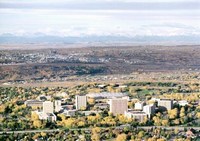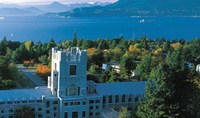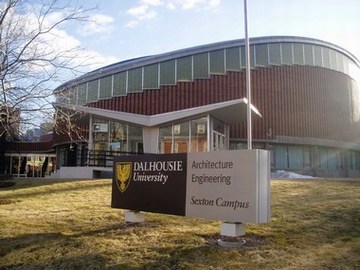Water Balance Model in the Class Room: Interest stretches from coast-to-coast!
The British Columbia-based Inter-Governmental Partnership (IGP) is reaching out to academia to bring the Water Balance Model into university classrooms. According to the IGP Co-Chair, Laura Maclean of Environment Canada, “the IGP is excited that universities in Western Canada and elsewhere are recognizing the value that the Water Balance Model provides as a learning tool. We are especially pleased that that the interest is cross-discipline.”
UNIVERSITY OF CALGARY
The Water Balance Model is being applied in a Masters Program class in ecological planning in the Faculty of Environmental Design. The course is about using ecological design principles in designing and building the urban environment on both a regional and site-specific scale.

The focus is on using ecological and landscape processes as design 'tools' and the philosophy is that a sustainable approach is about designing human activities into the ecological systems that support us. In order to do this effectively it is necessary both to understand how those systems work and how the design of the built environment can incorporate and complement system processes.
According to Dr. Mary-Ellen Tyler, Professor and past-Dean, “the value of the Water Balance Model in this instruction process is the feedback that it provides on how different spatial configurations at the site design level result in different hydrologic process responses and reinforces the important relationship between process and form.”
 The University of Calgary is a founding member of the Alberta Low Impact Development Partnership (ALIDP). “To demonstrate that ALIDP is commtted to brigning the inter-provincial partnership with British Columbia to fruition, the University has taken the initiative in becoming the first Alberta institution to be a paying subscriber. In short, we are walking the talk because we see the opportunities inherent in use of the Water Balance Model”, added Tyler.
The University of Calgary is a founding member of the Alberta Low Impact Development Partnership (ALIDP). “To demonstrate that ALIDP is commtted to brigning the inter-provincial partnership with British Columbia to fruition, the University has taken the initiative in becoming the first Alberta institution to be a paying subscriber. In short, we are walking the talk because we see the opportunities inherent in use of the Water Balance Model”, added Tyler.
For more information on the faculty 'where Art meets Science', click on this link to the Faculty of Environmental Design.
UNIVERSITY OF BRITISH COLUMBIA
 The Water Balance Model is one of the tools being introduced to 4th Year Civil Engineering students in an elective course dealing with the design of municipal infrastructure.
The Water Balance Model is one of the tools being introduced to 4th Year Civil Engineering students in an elective course dealing with the design of municipal infrastructure.
For the stormwater component, students are first introduced to the complexity of stormwater management and the competing interests. They then go through the process of developing a Master Drainage Plan for a residential subdivision. The application of on-site controls to minimize runoff is seen as a logical extension to current design practices and a necessary component to protect aquatic habitat influenced by urban runoff.
 The Water Balance Model provides students with a tool to look at options for the design of on-site controls. For their designs, students are expected to come up with residential lot modifications that will result in a 90% reduction in annual rainwater runoff volume. “The existence of this tool gives good credibility to the concept of on-site controls and a conceptual assurance that runoff volume reductions can be achieved”, reports Professor Jim Atwater.
The Water Balance Model provides students with a tool to look at options for the design of on-site controls. For their designs, students are expected to come up with residential lot modifications that will result in a 90% reduction in annual rainwater runoff volume. “The existence of this tool gives good credibility to the concept of on-site controls and a conceptual assurance that runoff volume reductions can be achieved”, reports Professor Jim Atwater.
For more information, click on this link to UBC Civil Engineering.
DALHOUSIE UNIVERSITY
According to Kim Stephens, Project Coordinator for the Water Balance Model initiative, “An opportunity arose to meet with the Centre for Water Resource Studies at Dalhousie University in Halifax, Nova Scotia. So, in March 2006, Dr. Bill Hart, Executive Director of the Centre, arranged for me to meet with a group of seven individuals representing engineering and planning. The purpose of the meeting was exploratory to see whether there might be Nova Scotia interest in partnering with British Columbia.”

Dr. Rob Jamieson, Assistant Professor in the Department of Biological Engineering, observed that “at first glance the Water Balance Model certainly seems to provide a fit with our needs, such that we are definitely interested in continuing the conversation with British Columbia to determine how we at Dalhousie can potentially integrate the Water Balance Model in the engineering undergraduate program as a teaching tool.” This observation was echoed by Susan Guppy, Associate Professor in the School of Planning who noted that “we hope to incorporate lessons learned from the BC experience in next year's teaching.” Other professors in the Dalhousie School of Planning who also expressed enthusiasm for customizing the Water Balance Model to apply it under Nova Scotia conditions were Patricia Manuel and John Zuck.
According to Ted van der Gulik,Chair of the Inter-Governmental Partnership, “We are pleased that our overture to Nova Scotia has been well received. We certainly hope that our initial contact with the Centre for Water Resource Studies at Dalhousie University will open the door to a broader conversation with Nova Scotia stakeholders who see the value in sharing tools and resources through an inter-provincial partnership. As a minimum, it would be great if Dalhousie becomes the third Canadian university to use the Water Balance Model in its curriculum.”
Posted July 2006

